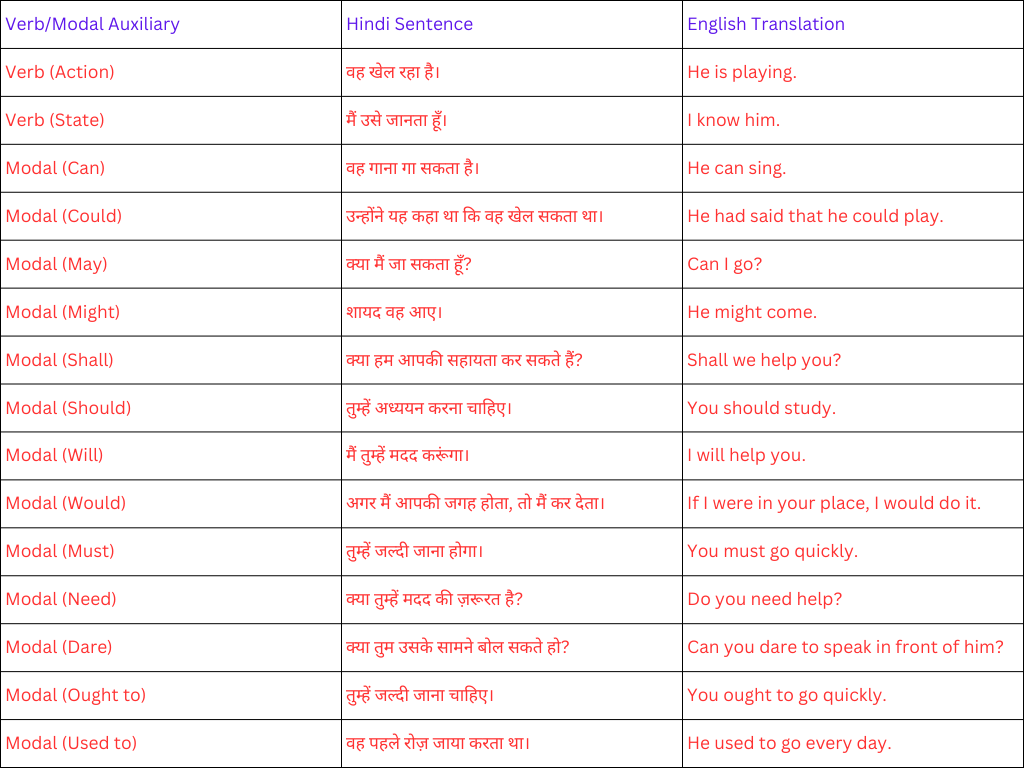Introduction
So you are here to learn Navodaya Vidyalaya class 9th Verbs and Modal Auxiliaries ? In the Navodaya Entrance Exam for class 9, a thorough understanding of verbs and auxiliary modals is essential. These linguistic concepts play a crucial role in English grammar and communication. In this blog, we will explore the fundamentals of verbs, modal auxiliary verbs, and auxiliary verbs, providing valuable insights and answering common questions that often arise in relation to these topics.
What are Verbs, Modals, and Auxiliary Verbs?
Verbs are the backbone of any sentence, expressing actions, states, or occurrences. They are essential for conveying meaning. Modals, on the other hand, are a specific category of auxiliary verbs that add nuances to the main verb, expressing possibilities, permissions, obligations, and more. Auxiliary verbs, also known as “helping verbs,” assist the main verb in expressing various tenses, moods, voices, and aspects.
Understanding Modal Auxiliary Verbs| Navodaya Vidyalaya class 9th Verbs and Modal Auxiliaries
Modal auxiliary verbs are an important subset of auxiliary verbs. They include words such as can, could, may, might, shall, should, will, would, must, and ought to. These verbs are used to express abilities, permissions, obligations, suggestions, and predictions. In total, there are 24 modal auxiliary verbs, each serving a specific purpose in sentence construction.
| Hindi Sentence | English Translation |
|---|---|
| वह खेल रहा है। | He is playing. |
| मैं किताब पढ़ रहा हूँ। | I am reading a book. |
| वह सुन रही है। | She is listening. |
| तुम्हे जाना चाहिए। | You should go. |
| मैं काम कर सकता हूँ। | I can do the work. |
| वह उसे देख सकता है। | He can see it. |
| क्या मैं तुम्हें मदद कर सकता हूँ? | Can I help you? |
| क्या तुम उसे मदद कर सकते हो? | Can you help him? |
| हमें स्नान करना चाहिए। | We should take a bath. |
| क्या मुझे यहाँ बैठने दिया जा सकता है? | May I sit here? |
| वह शायद विजेता बन सकता है। | He might become the winner. |
| तुम्हें जाना चाहिए। | You must go. |
| क्या मुझे उससे बात करनी चाहिए? | Should I talk to him? |
| क्या तुम कल पार्टी जा सकते हो? | Can you go to the party tomorrow? |
| क्या तुम उसे देख सकते हो? | Can you see him? |
Examples:
- She can speak English fluently. (वह अंग्रेज़ी बोल सकती है।)
- You should study regularly for better grades. (तुम्हें नियमित रूप से पढ़ना चाहिए बेहतर अंकों के लिए।)
- The 13 Modal Auxiliary Verbs: While there are 24 modal auxiliary verbs in total, it’s important to note that only 13 of them are commonly used in everyday communication. These frequently used modal auxiliary verbs include can, could, may, might, shall, should, will, would, must, need, dare, ought to, and used to. Understanding their meanings and usages is crucial for enhancing language proficiency.
Examples:
- I may go to the party tonight. (मुझे शायद आज रात पार्टी जानी हो सकती है।)
- Should we start the meeting now? (क्या हमें अब मीटिंग शुरू करनी चाहिए?)

Auxiliary Verbs | Navodaya Vidyalaya class 9th Verbs and Modal Auxiliaries
A Supportive Role: Auxiliary verbs, also known as helping verbs, assist the main verb in forming grammatical constructions. They contribute to expressing various tenses, moods, voices, and aspects. There are 23 auxiliary verbs in English, including forms of “be,” “have,” and “do.” These verbs are indispensable in creating grammatically correct sentences and conveying precise meanings.
Examples:
- He is studying for the exam. (वह परीक्षा के लिए पढ़ रहा है।)
- Have you finished your homework? (क्या तुमने अपना होमवर्क पूरा कर लिया है?)
- The 100 Auxiliary Verbs: While there are only 23 commonly used auxiliary verbs, it’s worth mentioning that there are around 100 auxiliary verbs in total. However, not all of them are extensively used in everyday communication. These auxiliary verbs encompass different forms, such as primary auxiliaries, modal auxiliaries, and marginal auxiliaries, each serving a specific grammatical function.
- The Four Types of Modals: Modal auxiliary verbs can be classified into four main types based on their functions: a. Ability: Expressing capability or competence. b. Permission: Indicating permissibility or granting authorization. c. Obligation: Conveying necessity or requirement. d. Possibility: Suggesting likelihood or potentiality.
By understanding these types, learners can effectively use modals to communicate intentions and attitudes.
Conclusion | Navodaya Vidyalaya class 9th Verbs and Modal Auxiliaries
Verbs, modal auxiliary verbs, and auxiliary verbs ( Navodaya Vidyalaya class 9th Verbs and Modal Auxiliaries ) form the foundation of English grammar. They contribute to the formation of meaningful sentences and convey nuanced meanings. In the Navodaya Entrance Exam for class 9, a solid grasp of these concepts is crucial for success. By referring to reliable study materials like the Navodaya Vidyalaya class 9 English Notes Chapter 4 Verb textbooks (available at anchor text), students can deepen their understanding and enhance their language skills. Remember to practice using verbs and modal auxiliaries through examples and exercises to develop fluency and accuracy in English language usage.
